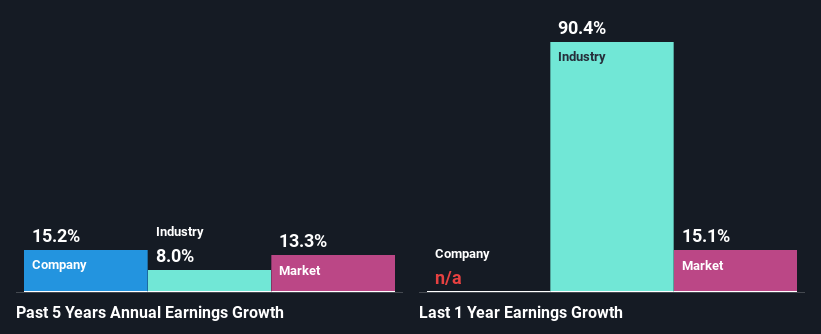Fairfax Financial Holdings Limited's (TSE:FFH) Stock Has Fared Decently: Is the Market Following Strong Financials?
Fairfax Financial Holdings' (TSE:FFH) stock up by 6.8% over the past three months. Since the market usually pay for a company’s long-term financial health, we decided to study the company’s fundamentals to see if they could be influencing the market. In this article, we decided to focus on Fairfax Financial Holdings' ROE.
Return on Equity or ROE is a test of how effectively a company is growing its value and managing investors’ money. In short, ROE shows the profit each dollar generates with respect to its shareholder investments.
View our latest analysis for Fairfax Financial Holdings
How To Calculate Return On Equity?
The formula for ROE is:
Return on Equity = Net Profit (from continuing operations) ÷ Shareholders' Equity
So, based on the above formula, the ROE for Fairfax Financial Holdings is:
12% = US$2.2b ÷ US$18b (Based on the trailing twelve months to March 2021).
The 'return' is the yearly profit. That means that for every CA$1 worth of shareholders' equity, the company generated CA$0.12 in profit.
What Has ROE Got To Do With Earnings Growth?
Thus far, we have learned that ROE measures how efficiently a company is generating its profits. Based on how much of its profits the company chooses to reinvest or "retain", we are then able to evaluate a company's future ability to generate profits. Assuming everything else remains unchanged, the higher the ROE and profit retention, the higher the growth rate of a company compared to companies that don't necessarily bear these characteristics.
Fairfax Financial Holdings' Earnings Growth And 12% ROE
At first glance, Fairfax Financial Holdings seems to have a decent ROE. And on comparing with the industry, we found that the the average industry ROE is similar at 13%. This probably goes some way in explaining Fairfax Financial Holdings' moderate 15% growth over the past five years amongst other factors.
As a next step, we compared Fairfax Financial Holdings' net income growth with the industry, and pleasingly, we found that the growth seen by the company is higher than the average industry growth of 8.0%.
The basis for attaching value to a company is, to a great extent, tied to its earnings growth. It’s important for an investor to know whether the market has priced in the company's expected earnings growth (or decline). Doing so will help them establish if the stock's future looks promising or ominous. What is FFH worth today? The intrinsic value infographic in our free research report helps visualize whether FFH is currently mispriced by the market.
Is Fairfax Financial Holdings Making Efficient Use Of Its Profits?
In Fairfax Financial Holdings' case, its respectable earnings growth can probably be explained by its low three-year median payout ratio of 14% (or a retention ratio of 86%), which suggests that the company is investing most of its profits to grow its business.
Additionally, Fairfax Financial Holdings has paid dividends over a period of at least ten years which means that the company is pretty serious about sharing its profits with shareholders. Upon studying the latest analysts' consensus data, we found that the company's future payout ratio is expected to rise to 37% over the next three years. Accordingly, the expected increase in the payout ratio explains the expected decline in the company's ROE to 6.1%, over the same period.
Conclusion
Overall, we are quite pleased with Fairfax Financial Holdings' performance. In particular, it's great to see that the company is investing heavily into its business and along with a high rate of return, that has resulted in a sizeable growth in its earnings. Having said that, on studying current analyst estimates, we were concerned to see that while the company has grown its earnings in the past, analysts expect its earnings to shrink in the future. Are these analysts expectations based on the broad expectations for the industry, or on the company's fundamentals? Click here to be taken to our analyst's forecasts page for the company.
This article by Simply Wall St is general in nature. It does not constitute a recommendation to buy or sell any stock, and does not take account of your objectives, or your financial situation. We aim to bring you long-term focused analysis driven by fundamental data. Note that our analysis may not factor in the latest price-sensitive company announcements or qualitative material. Simply Wall St has no position in any stocks mentioned.
Have feedback on this article? Concerned about the content? Get in touch with us directly. Alternatively, email editorial-team (at) simplywallst.com.

 Yahoo Finance
Yahoo Finance 
